I've created an API (Azure API App) and have enabled authentication/authtorization using Azure Active Directory (from the APP API . The app service is registered in AAD and everything looks good so far.
I've followed the steps in the the post below to generate a token, but the token does not seem to work.
var authContext = new AuthenticationContext("https://login.microsoftonline.com/<guid>/oauth2/authorize");
var credential = new ClientCredential("<clientId>", "<secret_from_aad>");
var result = (AuthenticationResult)authContext.AcquireTokenAsync("http://<api>.azurewebsites.net", credential).Result;
var token = result.AccessToken;
https://msdn.microsoft.com/en-us/library/azure/mt428036.aspx
The raw request looks like this:
GET https://<api>.azurewebsites.net/rest/v1/crm/surveys/all HTTP/1.1
Host: <api>.azurewebsites.net
Connection: close
Accept-Encoding: gzip,deflate
Authorization: Bearer eyJ0eXAiOiJKV1QiLCJ<rest-of-token...>
Host: <api>.azurewebsites.net
User-Agent: Apache-HttpClient/4.1.1 (java 1.5)
The response is
HTTP/1.1 401 Unauthorized
Content-Length: 58
Content-Type: text/html
Server: Microsoft-IIS/8.0
WWW-Authenticate: Bearer realm="<api>.azurewebsites.net"
X-Powered-By: ASP.NET
Set-Cookie: ARRAffinity=dd32cab21d0ca9541343a77c51d355d0781c0e0a4147a2166ecb955fe9d94a60;Path=/;Domain=<api>.azurewebsites.net
Date: Fri, 11 Nov 2016 11:20:49 GMT
Connection: close
You do not have permission to view this directory or page.
I've struggled for a while finding a way of generating a token without displaying a sign-in page and I'm not sure this is the best way (simple though...).
The system consuming the API must be able to generate a token programatically and send with the request.
I created a dummy AAD, a dummy App Service etc and put together this code sample:
class Program
{
static void Main(string[] args)
{
string response = HttpRequest();
Console.ReadLine();
}
public static string HttpRequest()
{
string serviceURI = "https://apiappdemo.azurewebsites.net/api/values/";
//Get the access token
string token = GetToken();
HttpWebRequest request = System.Net.WebRequest.Create(serviceURI) as System.Net.HttpWebRequest;
request.KeepAlive = true;
request.Method = "GET";
request.ContentLength = 0;
request.ContentType = "application/json";
request.Headers.Add("Authorization", String.Format("Bearer {0}", token));
using (HttpWebResponse httpResponse = request.GetResponse() as System.Net.HttpWebResponse) //Failing here... 401
{
using (StreamReader reader = new System.IO.StreamReader(httpResponse.GetResponseStream()))
{
return reader.ReadToEnd();
}
}
}
public static string GetToken()
{
var authContext = new AuthenticationContext("https://login.microsoftonline.com/b37d6c4c-012f-450c-81c7-406b6b584348/oauth2/authorize");
var credential = new ClientCredential("7ed0dccb-ade7-4a5e-b286-32b66eb929d1", "1bVIoJyMHsbuYsfuJ7or6krbKvWw3kpKfp69jsQuilw=");
var result = (AuthenticationResult)authContext.AcquireTokenAsync("https://apiappdemo.azurewebsites.net", credential).Result;
return result.AccessToken;
}
}
Any ideas what might be wrong?
Regards, Mike
